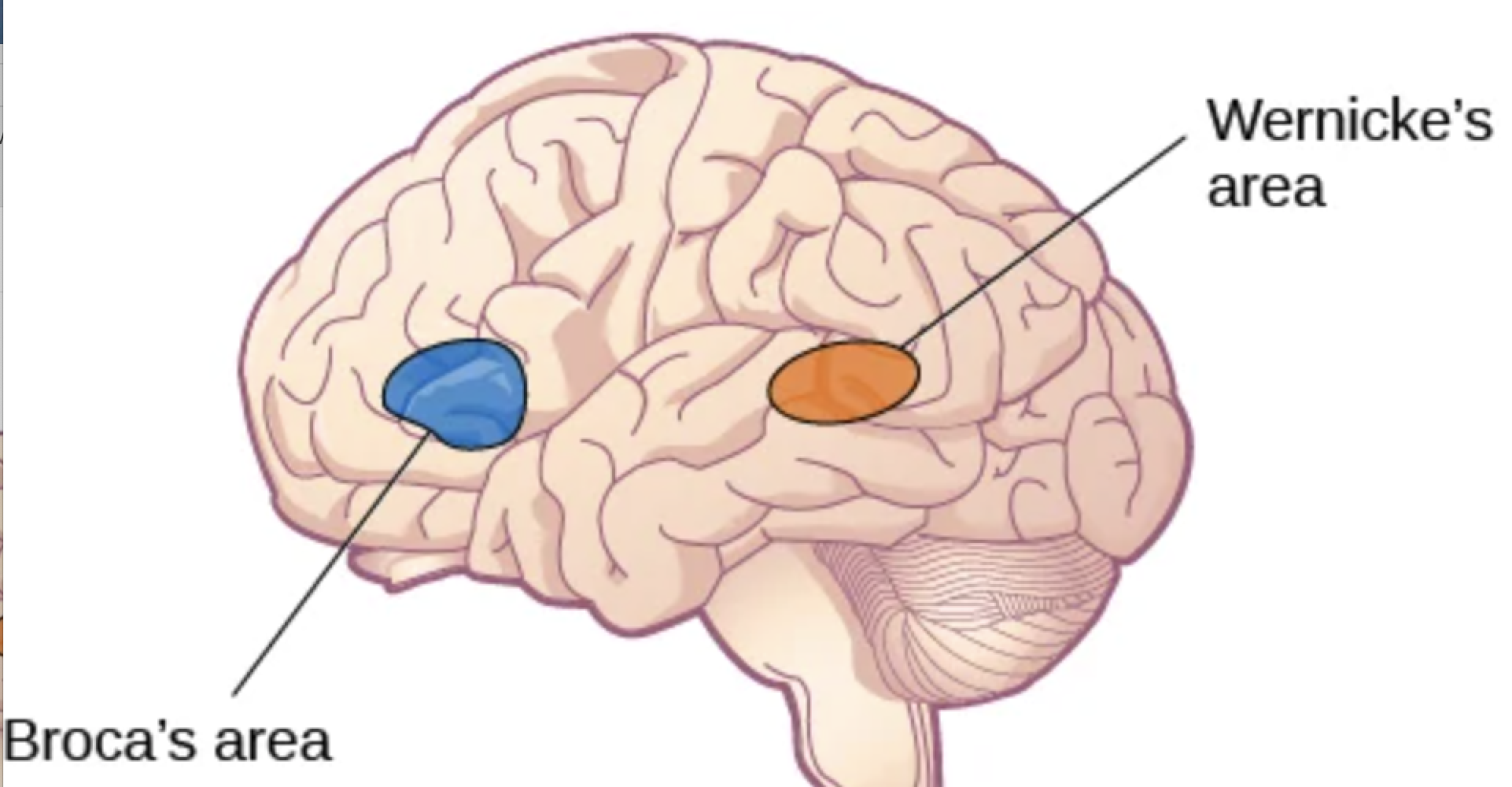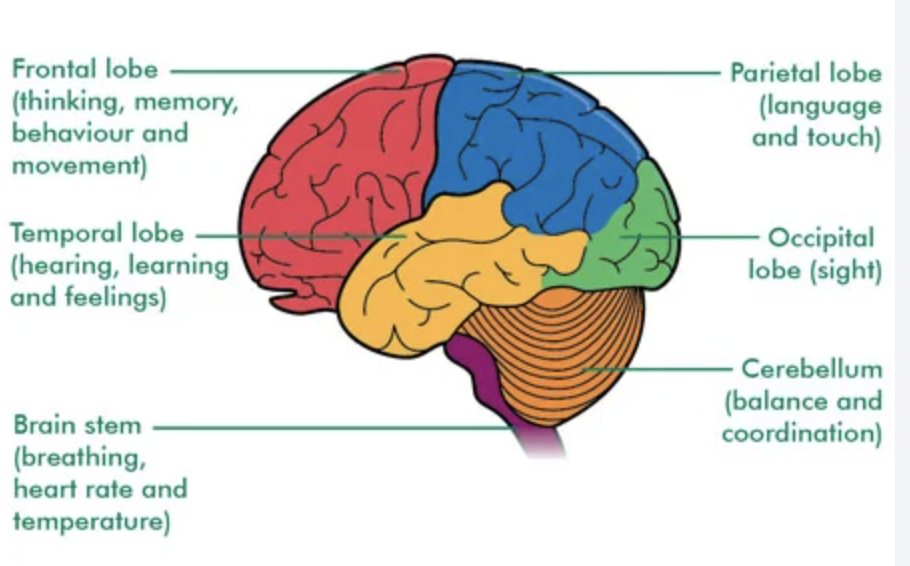Our Brains Talk
Over the past month, I have been dealing with a health issue. After a second surgery, I was experiencing shooting pain that I googled. Then, I was tormented with the idea that I had a clot. A scary clot that would travel up to my lungs or brain. My leg only felt better when I moved, so I paced the house, heavy-footed, like Frankenstein. Of course, this was all in the middle of the night, where thoughts of clots can haunt you, so I called for an appointment as soon as they opened.
I was waiting on the ultrasound table, extremely stressed, when the technician walked in. She was wearing a mask, so her voice was muffled. I asked questions about what was happening to my leg. Was there a clot? What should I do next? She began to fragment and ramble and mumble with a muffled sound, and I thought I was going to lose my mind. If I had to establish a worldwide mandate on speaking well, it would be that anyone in the medical field who needs to convey medical information to patients would have to take this training. I couldn’t make heads or tails of what she was saying. Every question answered was as hard to understand as the previous one. After several attempts, I gave up, tears streaming down my cheeks, “Never mind,” I said. “I can’t understand.”
She turned to look at me, then said, “Oh, you’re that speaking coach. You told us all about it during your surgery.” I remembered talking during the surgery, but apparently, I went through the entire criteria of brain-based speaking while they were working on my leg.
She said, “Oh, I know I need to speak more slowly.” “No, I said. It’s not that I want you to speak slower. You need to speak in sentences and give me a beat to process in between your sentences.”
She stared at me for a moment. “There is no clot,” she said. “Thank you,” I said.
One of the most startling things participants experience in the 2-Day Speaking Intensive is the realization that hardly anyone is speaking in sentences. Once you hear this, you can’t un-hear it. Fragmenting, rambling, and composing while talking is rampant worldwide.
Why does it matter? It matters because we end up making our listeners work so hard. Why are we doing that to them? Have you ever tried to listen and absorb a message that is infused with um, uh, and um, like, right, you know, um? Have you tried to retain information that was given to you in a page-long sentence?
The last newsletter focused on the five stages of listening that listeners go through to understand and retain what we are saying. You can find past newsletters in the Blog section of our website. www.333-communications.com This newsletter focuses on how the brain talks. When we work with the neurological coordination system we were born with, we speak perfectly.
How the brain talks:
Research has shown that two cognitive activities are involved in talking.
The first is to translate thoughts into a composed sentence.
Most of this creation is accomplished in Broca’s area on the front, left part of the brain.
The second cognitive activity involves transferring the sentence to the motor cortex so you can say the sentence with your voice, face, and gestures.
In other words, we are designed to compose a sentence and then say it.
The reason why people end up fragmenting, rambling, or composing while talking is that they aren’t using the neurological coordination system of speaking. They are using their habit pattern.
Adeen Flinker & Assoc. did a fascinating study at UC Berkeley and Johns Hopkins (published in March 2015). They put electrode implantations covering several areas of the brain to help manage patients’ seizures. The patients read and spoke words. In measuring the electrical activity, their measurements clearly showed the Broca area fired all the involved composing neurons and then went quiet. In a fraction of a millisecond, that sentence is transferred to the motor cortex, and the sentence is spoken aloud. By the time speech commenced, they could see that an overwhelming majority of electrodes in Broca’s area were no longer active.
They found that Broca’s area — which is located above and behind the left eye — engages with the brain’s temporal cortex, which organizes sensory input, and later the motor cortex, as we process language and plan which sounds and movements of the mouth to use, and in what order. However, the study found Broca’s area disengages when we actually start to utter word sequences.
“The Broca area shuts down during the actual delivery of speech, but it may remain active during conversation as part of planning future words and full sentences,” Flinker said.
Broca’s and Wernicke’s areas are connected by a bundle of nerve fibers called the arcuate fasciculus. This connection allows information to flow between the two areas, enabling seamless communication between speech production and comprehension. Broca's and Wernicke's areas are essential for human language abilities. They work together to ensure that we can understand, produce, and communicate effectively.
Speaking is a Skill:
Our ability to construct sentences arises from procedural memory—the same simple memory system that lets our dogs learn to sit on command.
This is important to note. Your ability to speak clearly (aka “in sentences”) is unrelated to content. You can speak beautifully, off the cuff, in every conversation, and this has nothing to do with knowing exactly what you are saying. This is great news because most of our lives are unscripted (off the cuff).
Scientists distinguish between:
Procedural Memory
Which is relevant for learning skills such as how to swim or play tennis
It is a skill that involves a coordination system
This is what we are tapping into on Day 1 of the 2-Day Intensive
Declarative Memory
Which stores knowledge, including facts and memories of events, such as one’s birthday, or a script you want to deliver.
In this speaking training, we start with tapping into procedural memory, where your brain learns a skill. When learning a complex motor skill like tennis, several parts of the brain work together in a network to learn, refine, and eventually automate your movements. This process shifts from a highly conscious, effortful state to a more subconscious and fluid "muscle memory".
At the beginning of the learning process, your brain is actively engaged in problem-solving and conscious control. Using tennis as an example:
Prefrontal cortex: This area, associated with complex thinking, decision-making, and planning, is highly active as you think through each step of a new technique. For example, you consciously focus on your racket grip, your footwork, and the angle of your swing.
Motor cortex: Located in the frontal lobe, the motor cortex sends signals to your muscles to execute voluntary movements. During the initial phase of learning, it actively coordinates with other brain regions to map out the new movement patterns.
Basal ganglia: This group of nuclei deep in the brain is critical for initiating and controlling movement. Along with the prefrontal cortex, it helps to initiate and sequence the complex movements required for a new skill.
With repeated practice, your brain begins to refine and consolidate the motor skills.
Cerebellum: This area at the back of the brain is crucial for coordination, balance, and fine-tuning movement. As you repeat a motion, the cerebellum is involved in detecting and correcting any errors, making your movements more precise and automatic over time.
Hippocampus: Known for its role in memory, the hippocampus is involved in remembering the strategic aspects of the game, like recalling how a certain shot felt or remembering a successful strategy against an opponent.
After extensive practice, the skill becomes ingrained. This leads to a shift from conscious control to subconscious, automatic execution.
Decreased brain activity: Once a skill is well-learned, the activity in the prefrontal cortex decreases. The movements no longer require the same level of conscious, deliberate thought.
Strengthened neural circuits: The repeated motions strengthen specific neural pathways, particularly between the motor cortex, cerebellum, and basal ganglia. These "hard-wired" circuits allow for quicker and more fluid reactions, freeing up conscious thought for strategy.
"Flow state": This neurological change is what allows an experienced player to enter a "flow state," where they react instinctively without overthinking, enabling faster, more natural, and more precise movements.
If you practice speaking in sentences every chance you get, imagine what a great communicator you will be! The flow state is fun. Then, when you are in higher-stakes conversations, you don’t have to worry about being memorized - you can confidently deliver your message to your listener’s mind. Your job is to connect and to be able to do that in every conversation.
PRACTICE:
The basis of all Peak Performance is maximum control. How do you acquire control and then maintain and enhance the experience? While many people answer it’s practice, that’s sort of right. However, if you practice the wrong batting swing, you will never be a great baseball player. If you practice the wrong way to talk, you will never be a great communicator. You must practice the correct coordination system to have control.
333 coaching starts with learning and correcting executives' “speaking” swing. Our habit of talking, while familiar to us, may be quite different from the neurological speaking system we were born to use. For most clients, the system you were born with is perfect, and your habit is not. Once corrected, you can truly say practice leads to excellence, and consistent excellence is another way of describing control.


